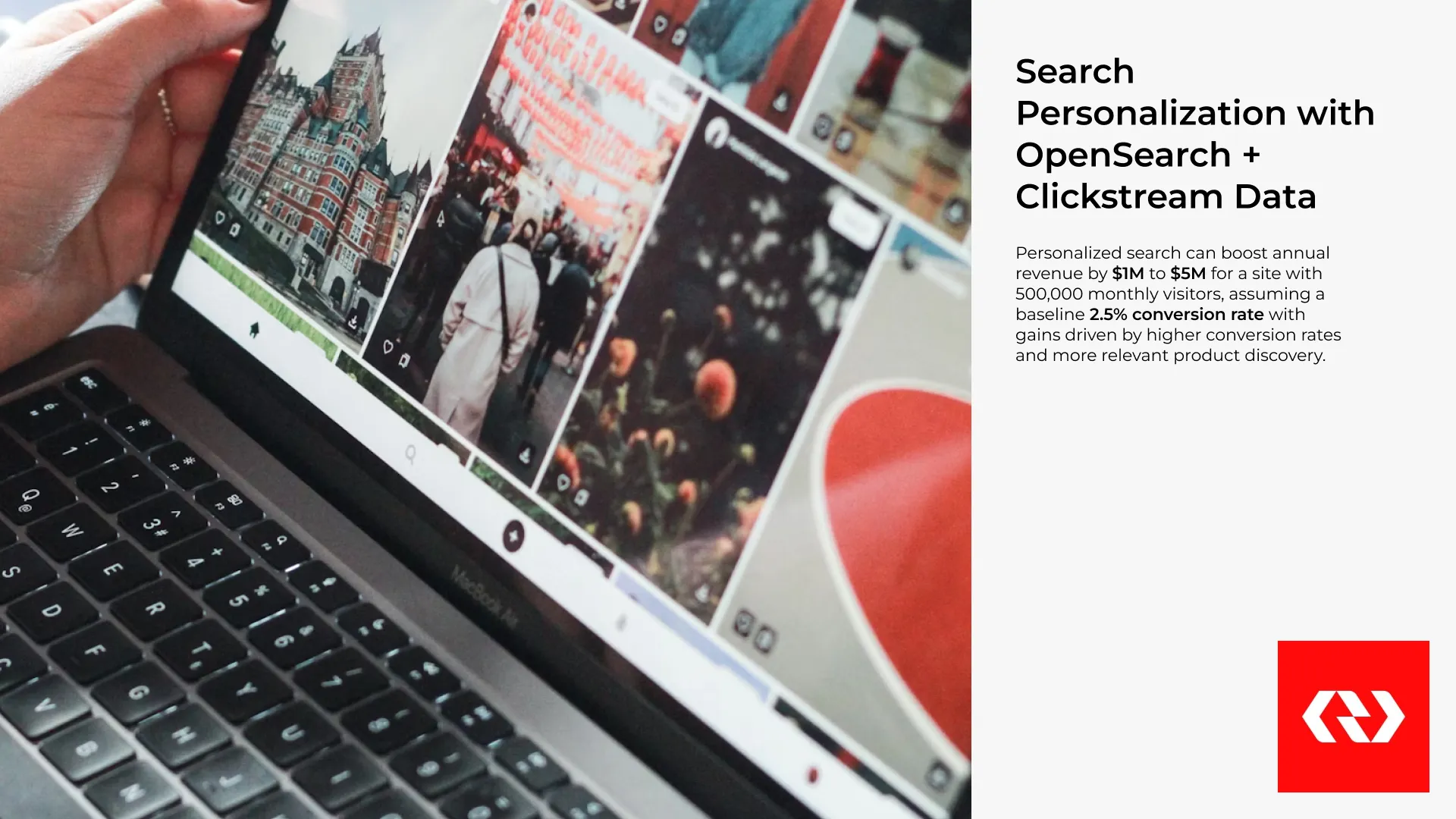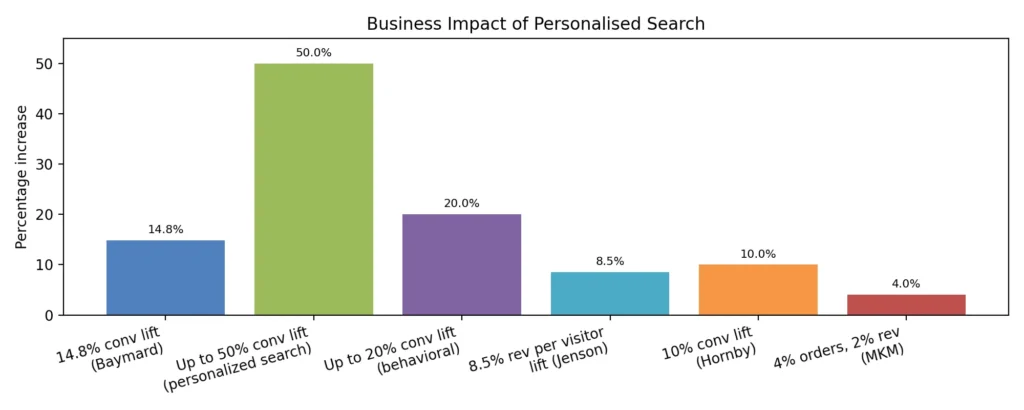Embracing Downtime: Strategies for Greater Efficiency


Consumers expect search results that feel like they were curated just for them.
Generic product listings or “default sort” frustrate shoppers and drive them to competitors.
Surveys show that 80% of consumers want retailers to personalize their shopping experience, and 91% prefer brands that provide relevant offers and recommendations.
Personalization is no longer a “nice-to-have” – it is a baseline requirement that separates market leaders from laggards.
Personalized search can boost annual revenue by $1M to $5M for a site with 500,000 monthly visitors, assuming a baseline 2.5% conversion rate and $75 average order value. Gains come from higher conversions and better product discovery.
Personalized search aligns results with each shopper’s preferences, past behavior, and context, resulting in higher engagement, conversion, and loyalty. Real-world data proves the upside:

Personalization directly impacts revenue, customer lifetime value, and retention.
Track search queries, product clicks, add-to-cart events, purchases, dwell time, and bounces.
Include user IDs, timestamps, query terms, product IDs, and metadata like device type or location.
Stream events in real time via Kafka or Kinesis.
Use Apache Flink or Spark Structured Streaming to:
Combine BM25 lexical relevance with vector similarity and personalization boosts:
Design indices with fields for category IDs, brand IDs, price buckets, vector embeddings, and rank features.
Use search templates or aliases for quick A/B tests.
Capture clicks, purchases, and cart events to retrain personalization models:
Track CTR, conversion rate, AOV, and time-to-purchase.
Run control groups to validate lift and monitor latency and infrastructure costs.

| Phase | Activities | Timeframe |
|---|---|---|
| Discovery & instrumentation | Define KPIs, set up tracking, select stack | 2–4 weeks |
| Pipeline & features | Real-time event processing, feature engineering | 4–6 weeks |
| Ranking integration | Implement boosts and hybrid search | 4–6 weeks |
| Model training | Build, test, and deploy ML models | 4–8 weeks |
| A/B testing & rollout | Experiment, monitor, scale | 4–6 weeks |
⏱ Total: A robust system takes 3–6 months.
A basic rules-based MVP can be live in a few weeks.
Cost vs. Return:
Search personalization powered by clickstream data and OpenSearch delivers measurable lifts in revenue, conversions, and loyalty.
With a structured pipeline, open-source flexibility, and continuous optimization, retailers can match the capabilities of proprietary platforms without the licensing costs.
For e-commerce teams competing in a crowded marketplace, personalized search is the fastest path to higher conversions and stronger customer relationships.
Implementing personalized search with OpenSearch and clickstream data typically costs $100K–$400K in the first year, depending on scope. A basic MVP with a small team can be built in 3–4 months for around $100K–$200K, while a full-featured, real-time system with analytics, model training, and monitoring may take 6+ months and cost $200K–$400K including infrastructure. Despite the cost, the ROI is substantial—high-traffic e-commerce sites can see $1M–$5M in annual revenue uplift, making it a high-leverage investment.